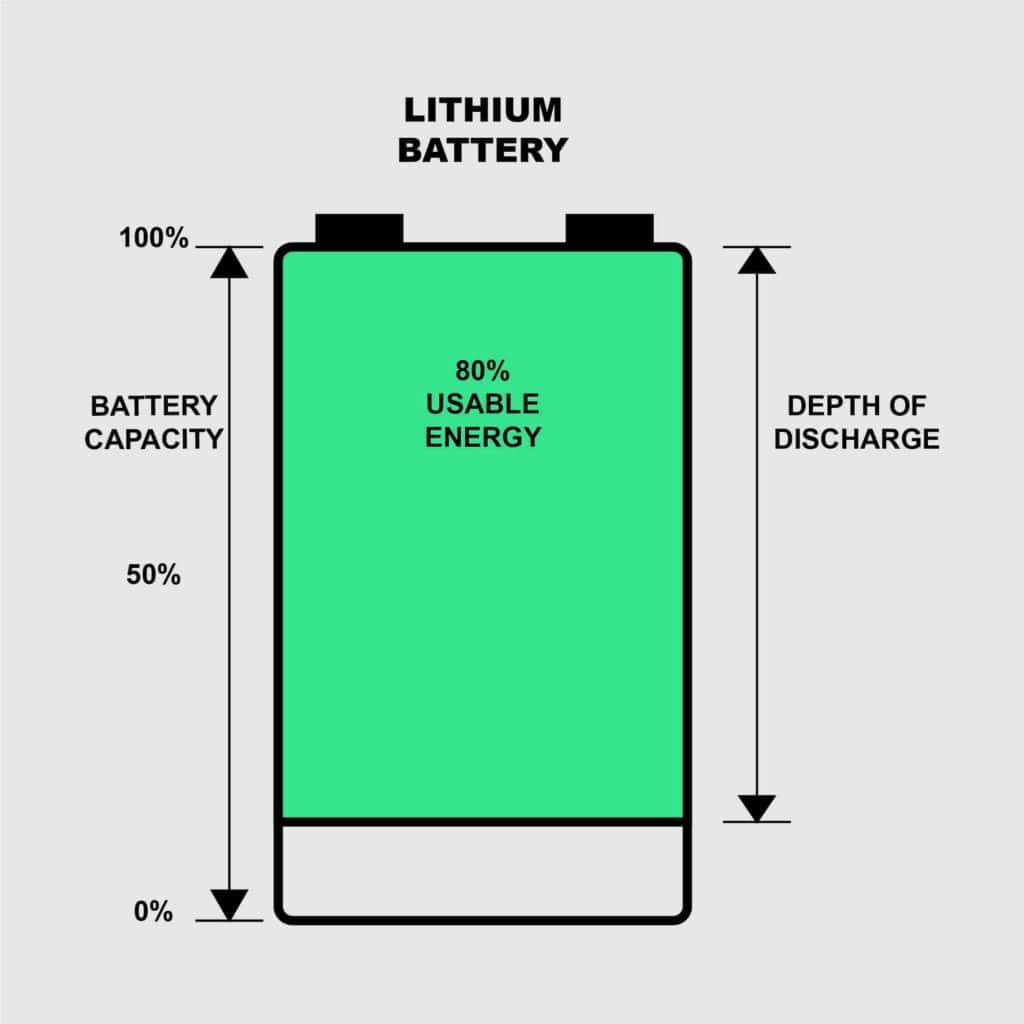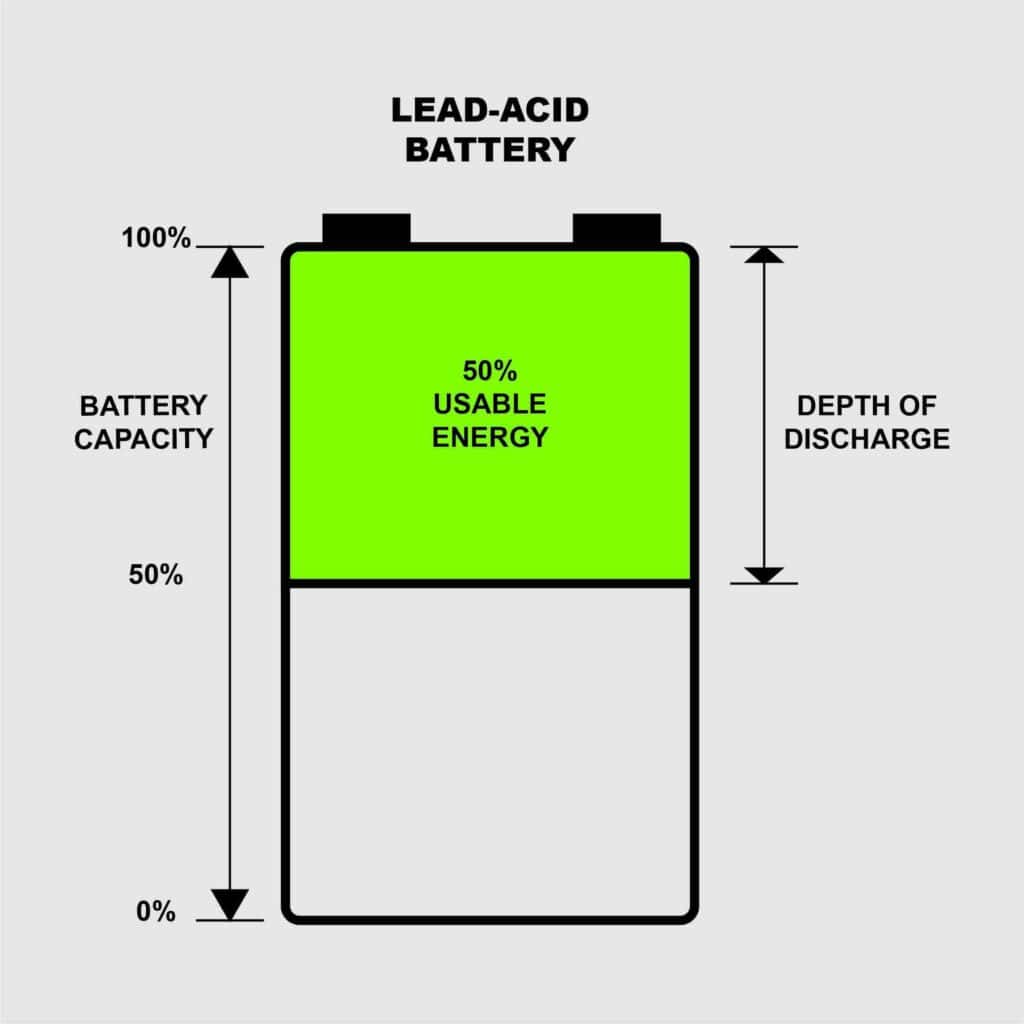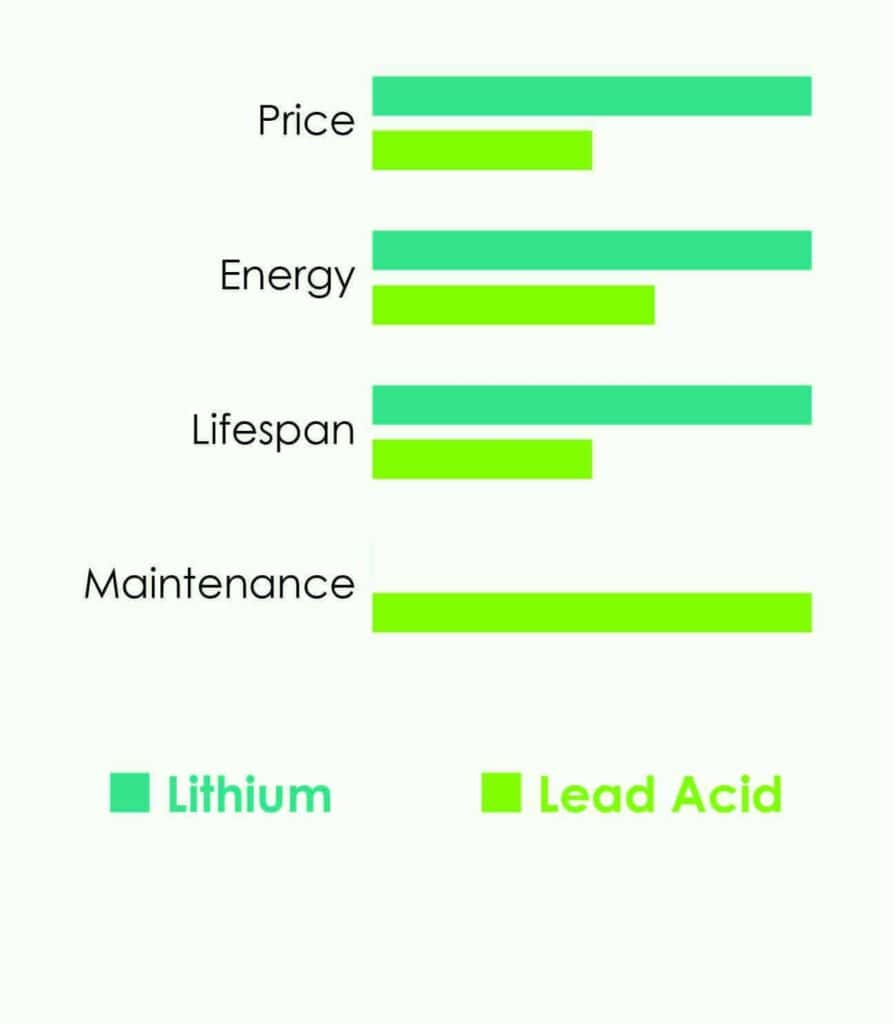Table of Contents
Lead Acid vs Lithium Batteries. Which Should You Choose?
If your home is off-grid or you need backup power in case of a blackout, you will need batteries.
But with so many options, which is the best solar battery and why? In this post, we compare lead-acid versus lithium batteries. To keep things simple, we’ll compare them using four measures.
- How much energy can the battery hold?
- How much maintenance does the battery require?
- How much does the battery cost?
- What’s the lifespan of the battery?
Lithium batteries
We use lithium batteries in everything from electric cars to power tools. Lithium has several advantages over other types of batteries, including lead-acid.
With a lifespan of 10 years or more, a lithium battery lasts at least twice as long as a standard lead-acid battery. It also doesn’t need maintenance like lead-acid batteries, which require an equalizing charge and monitoring to ensure the batteries don’t dry out.
Lithium is, however, more expensive. You can expect to pay up to 60% more for lithium than you would for lead-acid.
Battery capacity
Batteries have a depth of discharge. This is how much of the batteries total energy (capacity) you can safely use. All batteries have a maximum limit of energy you can use before you need to recharge them. Exceeding this limit reduces the batteries lifespan.
The depth of discharge for lithium solar batteries is 80%. That means you can use 80% of the battery’s total energy capacity. For example, if you have a 100Ah battery you can use 80Ah before you risk damaging the battery.
The depth of discharge for a lead-acid battery is 50%.

Battery efficiency
Lithium batteries are over 95% efficient. This means they can use 95% of the energy they store. If you have 100 watts coming into a battery, you have 95 watts available to use.
Batteries with higher efficiency charge faster. Lithium batteries can take a faster rate of current which means they charge quicker than lead-acid which overheats if you charge them too quickly.
Faster charging becomes critical in winter or overcast days when days are shorter and peak sunlight hours are fewer.
Lead-acid batteries are 80-85% efficient.
Energy density
Lithium batteries can fit more energy into less volume and weight. This makes them smaller and lighter than lead-acid. Thus, they have a higher energy density.
A higher cell voltage (3.6 Volts) gives them a larger energy density than lead-acid (2 Volts). Because of its higher energy density, a lithium battery bank can be half the size and up to a third lighter than lead-acid.
This is especially useful if you need to fit your batteries into a tighter space or you’re planning to use the batteries in a boat or campervan.
Advantages of lithium batteries
The pros of a lithium battery include:
- Longer lifespan.
- Smaller and lighter than lead-acid.
- No maintenance needed.
- No toxic lead.
- Charge quicker.
Disadvantages
The cons of a lithium battery are:
- Up to 60% more expensive.
- Consistently high temperatures can reduce the battery’s capacity.
Lead-acid batteries
Lead-acid batteries are cheaper than lithium. They, however, have a lower energy density, take longer to charge and some need maintenance.
The maintenance required includes an equalizing charge to make sure all your batteries are charged the same and replacing the water in the batteries.
There are two main types of lead-acid battery. These are Flooded Lead-Acid (FLA) and Sealed Lead-Acid (SLA). For a comparison of these, read this post on Flooded lead-acid versus Sealed lead-acid.
Lead-acid batteries are much cheaper than lithium although they have a shorter average lifespan of between 3-5 years.
Battery capacity
The recommended depth of discharge for lead-acid is 50%. That means a 100Ah lead-acid battery will give you 50Ah of energy before you need to recharge.
Lead-acid batteries thus reduce the usable energy you have. One way to offset this is to buy more batteries.

Battery efficiency
Lead-acid has an efficiency of 80-85%. This means if your battery receives 100 watts, only 85 watts will be available to use.
The reduced efficiency of the battery affects the rate of current it can take. Lead-acid requires a slower rate of current when charging, especially as the battery reaches full capacity. This makes the battery take longer to charge.
Because they take longer to charge (sometimes twice as long as lithium), lead-acid batteries can be frustrating to use especially in winter or on a cloudy day.
Energy density
Lead-acid has a lower energy density than lithium. It holds less energy while using more volume and weight. Thus, it’s bigger and heavier.
This isn’t too much of a concern if you plan on using it in your home and you have adequate space. It can quickly be a problem if you want to use them in a mobile application like a campervan.
Advantages of lead-acid batteries
The pros of lead-acid batteries are:
- They’re cheaper.
Disadvantages
The cons of lead-acid are:
- Gives you less energy to use.
- Takes longer to charge.
- Flooded Lead-Acid batteries require maintenance.
- Uses toxic lead.
- Half the lifespan of a lithium battery.
Lithium vs lead-acid. Which Should You Choose?
Lithium batteries have a higher upfront cost. But because they can last up to twice as long as lead-acid the price evens out.

Here are the battery types I’d recommend for different applications:
Off-Grid Home/Full-time use
For off-grid or full-time use, you can go with either Lithium or Flooded Lead Acid (FLA) (if you don’t mind the maintenance).
For a 2nd home or residence, you don’t use as much, Sealed Lead Acid (SLA) is better. They don’t need maintenance and won’t die on you if you leave them idle.
Battery Backup System
If you’re just worried about blackouts or load shedding and you need backup power you want Sealed Lead-Acid (SLA). Lithium might be too expensive if you’re barely going to use them and FLA would require too much maintenance.
To sum up, lithium is the better battery. There are however scenarios where lead-acid makes better sense. Evaluate your needs and weigh them against your budget to determine your best option.